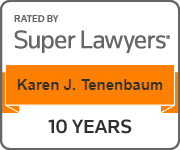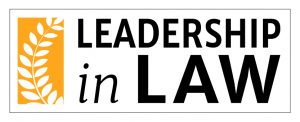A little bit about Intellectual Property
By Richard Gearhart

Patents are legal documents that protect inventions and new technology. The inventions can be a consumer product such as a toothbrush or carburetor, or a software product such as an app installed on a smartphone or a program that runs from a website. Patents are also very important in the medical field for protecting medicines and medical devices. Applications for patents are made to the US Patent and Trademark Office, where after filing the application it is examined, and if it meets the necessary requirements the patent will be granted to the inventor.
The most common types of patent protection are utility patents that protect a concept, or alternatively, design patents that protect a particular design. Utility patents attempt to protect the concept of the invention; so if I were to file a patent to protect a desk, for example, I would cover different materials such as wood, plastic, metal, glass, and also different types and shapes of the desk, having an oval top or rectangular top or square top. Using utility protection, I would attempt to protect as many different variations on my concept as I could to prevent others from making minor changes to my invention and circumventing my patent. I would do a search first of other patents to see if my concept were protectable.
Design patents protect the design of the object rather than the function or concept. A good example of a design application would be an application filed to protect the shape of a Coca Cola bottle. The concept of a bottle has been well known for many years, but the particular shape of a Coca-Cola bottle is unique and so the shape of the bottle can be protected because it’s ornamental.
Utility patents are good up to 20 years from the date of filing and design patents have a term of up to 15 years from the date of filing. Trademarks protect a brand – technically they are source identifiers which means that the purchasing public knows, based on the trademark, which company made the product that they are about to purchase. The object of a trademark is for consumers to know the source of the goods they are purchasing. There are different types of trademarks. The best type of trademark is a wordmark, which gives the broadest protection. A wordmark will protect against a third-party use in any color or font or if it’s used in any manner at all. Trademarks are also closely associated with the type of goods that the trademark owner is selling. So each TM contains a description of the goods associated with the trademark. In fact, it’s possible for two trademark owners to own the same name but for different goods. However, for this to happen there has to be enough difference in the nature of goods and the channels of trade their customers will not be confused as to the source of goods.
Normally a search is conducted before filing a trademark application; after the application is filed it’s examined by the Trademark Office. Assuming the Trademark Office approves the trademark there is a 30 day period wherein a party can oppose the grant of the trademark. If no opposition to the trademark registration is filed, then the trademark becomes registered and the owner can use the ® symbol in association with the mark. A trademark can be maintained as long as it’s used.
Words, phrases, logos, scents, colors can all be the subject of Federal trademark protection.
Copyright protection protects expressive works such as music, literature, movies, works of art, and even software. There has to be a creative aspect for the work to receive copyright protection, but registration of the Copyright is not necessary. Copyright protection Horizons (??) automatically upon the creation of the work. While not legally necessary, Copyright notices UN ?? works to do put the public on notice that the author of the work takes its copyrights seriously. There are also benefits to registering copyrights, such as statutory damages which provide for a definite statutory damage amount ranging from $200 to $150,000 for each individual Copyright violation Depending on the circumstances.
For there to be an enforceable Copyright there has to be a creative element. For example, a chef from Puerto Rico recently filed a lawsuit against Churches Chicken claiming that he was the originator of the chicken sandwich in the 1980s. The court denied his request for relief stating: “A recipe – or any instructions – listing the combination of chicken, lettuce, tomato, cheese, and mayonnaise on a bun to create a sandwich is quite simply plainly not a copyrightable work”.
Trade secrets and know-how are related and are often some of the most important assets of a company. Trade secrets are secrets that give a company a competitive advantage. It may be a manufacturing process, a formula, or a customer list. The most important thing is that companies must take steps to keep their trade secrets secret. If you want to enforce a trade secret then you’ll have to show that you are taking affirmative steps to make sure that the information is released only on a need-to-know basis, state steps were taken to guard its confidentiality, and that employees working with the trade secret had an obligation of confidentiality to the company. If the secret could be identified by a person outside the company then it won’t maintain its status as a trade secret.
Know-how is generally not protectable (except as kept secret), but it is an asset of the company and can be assigned a value. If the company is being sold or if the know-how is licensed, then it can have value. Know-how, for example, can be experienced with fixing a particular type of machine, keeping a factory line running, or mixing ingredients in a certain way for a bakery.
Since obtaining intellectual property usually involves lawyers, which can be expensive, people often ask whether intellectual property is worth the investment. The answer depends on several considerations. First, does the cost of the intellectual property fit within the overall budget of the project? If projected sales of the product are say, over $500,000 a year, then investing $15,000 in a patent or $2500 in a trademark seems like a logical investment to maintain a monopoly. Moreover, a third party may already own intellectual property related to the invention, or in the case of a trademark, the name. Not checking before plowing ahead with an investment in the business based on certain products or names can be a costly mistake that later results in expensive litigation. It’s important to make sure that a third-party holding the IP can’t block the project from moving forward.
What about enforcement of intellectual property? Litigation costs in the US can be very high and if it’s not expected that the owner will want to get involved in intellectual property litigation, then is it even worth filing the intellectual property in the first place? In fact, 80% of the value of having the intellectual property does not come from actual enforcement in court, but rather in its ability to block other people from starting on a similar project. This occurs without the IP owner’s knowledge.
Most intellectual property, especially patents and trademarks, undergo a search process before the application is filed. Frequently third-party intellectual property is found from the search that blocks the client’s proposed patent or trademark filing. In many cases, the third-party intellectual property is so close that it poses a real threat to the client’s project. Most responsible intellectual property counselors will try to find ways around the blocking IP but in our experience, we suggest roughly 30% of projects be avoided because the third-party intellectual property poses too large a risk of litigation to advise the client to move forward. The intellectual property holder never knows that a search is being conducted in his or her technical area by a third party – but the way the system works, the patent or trademark could stop somebody from entering your market or using your name without ever having to go to court. So the intellectual property has value beyond being asserted in court which is another option if circumstances require it.
These are the basics of intellectual property. The law around each one of these topics is complex, and if you or a client finds themselves in a situation where intellectual property is an issue, it’s best to contact an intellectual property professional who can properly guide you through the maze of government regulations and case law.


